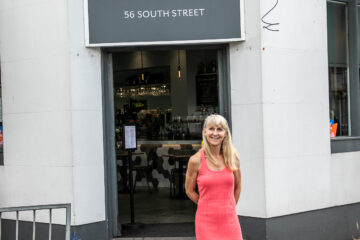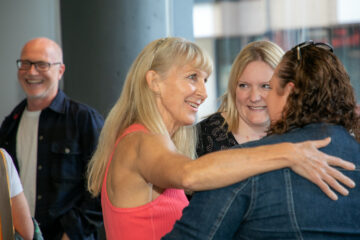The Power of Validation in Relationships: Creating a Space of Safety and Growth
At the heart of any strong relationship is a sense of connection, understanding, and emotional safety. One of the most effective ways to cultivate these qualities is through validation—truly hearing, acknowledging, and affirming the other person’s thoughts, feelings, and experiences.
When we validate one another in our relationships, we create an environment where everyone feels supported, safe, and acknowledged. However, validation doesn’t always come naturally—it takes practice and conscious effort.
Validation is about much more than agreeing with the other person; it’s about recognizing their perspective as valid and meaningful, even when it differs from our own. By keeping our hearts open and making a deliberate effort to truly listen, we can create a deeper connection and a safe space where we can all feel seen and valued.
Why Validation Matters
It’s easy for us to get caught up in our own thoughts and perspectives, often leaving little room for truly understanding the other person’s point of view. This can lead to feelings of disconnection and frustration in relationships. When someone expresses their feelings, whether it’s about a joy or a struggle, they are seeking more than just acknowledgment; they are looking for emotional connection and understanding.
Validation offers that connection. When we validate another person, we are essentially saying, “I see you, I hear you, and your experience is important.” This act alone has the power to reduce stress, boost self esteem and strengthen the emotional bond between people. It creates a foundation of trust, where both partners feel safe to express themselves fully without fear of judgment or dismissal.
The Practice of Validation
Validation doesn’t always come easily, especially when we’re in the middle of our own emotional experience. It can be challenging to step outside of ourselves and focus on the other person, particularly if we’re dealing with conflict or misunderstanding. That’s where the practice comes in—validation is a skill that can be learned and honed over time.
- Listen Fully: The first step in validation is active listening. This means giving the other person your full attention, without interrupting or planning your response while they’re speaking. It’s about being present in the moment, both mentally and emotionally, so you can fully take in what they are expressing and check with them that what you have heard is accurate.
- Acknowledge Emotions: Often, we rush to offer solutions or counterpoints without first acknowledging the other person’s feelings. By simply acknowledging their emotions—whether it’s joy, frustration, or sadness—you create a space where they feel heard and understood. Statements like, “I can see that this is really important to you” or “It sounds like you’re feeling really overwhelmed” can go a long way in validating their experience.
- Reflect and Affirm: Reflecting back what you’ve heard shows that you’re truly listening and understanding their perspective. You don’t have to agree with everything they say to validate them. Instead, focus on affirming that their emotions and thoughts are valid: “I understand why you’d feel that way” or “That makes sense, given what you’re going through.”
- Keep an Open Heart: Validation requires an open heart, especially during moments of tension or conflict. It’s easy to become defensive or focused on proving our own point, but by keeping our hearts open, we allow ourselves to truly see the other person. This openness creates a sense of emotional safety that encourages both partners to grow together rather than apart.
The Space Between: A Place for Safety and Harmony
When validation becomes a regular practice in our relationships, something profound happens. The space between two people transforms from a place of potential conflict or misunderstanding into a space of safety, harmony, and mutual respect. This safe space becomes a container for growth—both individually and together.
In this space of validation, we allow ourselves and others to be vulnerable, to express our authentic selves without fear of being dismissed or judged. We create an atmosphere where emotional intimacy can flourish, and where both partners feel empowered to grow and evolve. The relationship becomes a place of support and understanding, rather than a battleground for competing needs and desires.
The Benefits for Both People
Validation isn’t just about making the other person feel good—it’s a mutually beneficial practice. When we validate others, we also open ourselves to deeper empathy and understanding. We learn to step outside of our own experience and see the world through someone else’s eyes, which enriches our perspective and deepens our connection to the people around us.
As both people practice validation, the relationship grows stronger. Communication becomes more open and honest, conflict is handled with more compassion, and both individuals feel more secure and valued. This, in turn, reduces stress and fosters greater satisfaction within the relationship.
Creating a Foundation for Growth
Relationships are an ongoing journey, filled with opportunities for growth, connection, and mutual support. By practicing validation, we nurture the space between ourselves and the people we care about, transforming it into a place of safety and harmony. In this space, we—and our relationships—can truly thrive.
Whether you’re navigating a romantic partnership, a friendship, a conversation with a colleague, or family dynamics, the practice of validation can deepen your connection, strengthen your bond, and create an environment where both you and the other person feel heard, valued, and supported. And in that space of mutual respect and understanding, the opportunity for growth—for both individuals and the relationship itself—is limitless.



0 Comments